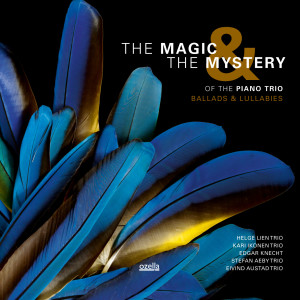 The piano jazz trio is alive and well in northern Europe, as this compilation from the German label Ozella demonstrates. The promotional material describes this music as perfect for “… contemplative moments of the wintertime,” and that it is. I’ve found it to be a perfect accompaniment and companion to the days and nights of the winter.
The piano jazz trio is alive and well in northern Europe, as this compilation from the German label Ozella demonstrates. The promotional material describes this music as perfect for “… contemplative moments of the wintertime,” and that it is. I’ve found it to be a perfect accompaniment and companion to the days and nights of the winter.
The compilation gives prime focus to German pianist Helge Lien and his trio, which is a good choice. The trio’s album Badgers and Other Beings was critically acclaimed in 2014, and this collection includes two selections from it, the opening track “Mor” and the closer “Badger’s Lullaby.” The former is beautifully melodic, one of those pieces that seems to bring the hopeful winter sunshine with it whenever it’s played. The latter is far from what we might consider a human lullaby, with a strong focus on intensely improvised, almost free-form percussion and drums. The interplay among the three instruments combines to give a picture of relaxed wildness, calm savagery. Here’s a stream of “Mor”:
Also included in this collection are selections from earlier Lien releases including “It Is What It Is, But It Is,” a piece that emphasizes the pianist’s stately and warm voicing and also has a beautiful bass lead section; “Øy,” a relaxed and contented-sounding, free-improvised piece from Lien’s 2007 solo debut; and this album closes with the title track from the trio’s second album Natsukashii. The word is Japanese for something like the English word “nostalgia” but perhaps a more intense feeling of memories triggered by objects. The composition is warm and friendly; its highlights include delightful cymbal brushwork and intuitive interplay between bass and piano.
The Magic & The Mystery also has my two favorite pieces from one of my favorite 2013 records, the Stephan Aeby Trio’s Utopia. Both “Es Schneit Doch Hüt” and “Mindarai” still enchant me.
New to me are the trios headed by Norwegian Eivind Austad, Finn Kari Ikonen and Edgar Knecht, an up-and-coming German pianist with a fondness for his country’s folk canon. This album opens with Austad’s warm, lullaby-like cover of David Bowie’s “Life On Mars” that leaves me wanting more of Austad’s playing. Likewise Ikonen’s, which here is represented by “Septentrional,” the longest work on the album, which blends elements of classical, avant garde, cinema, and cabaret, and builds to a swinging, emotion-packed climax. Ikonen’s “Pacific,” which was the final track on his trio’s album Bright, features furtive piano voicings, microtones on arco bass and unusual sounds of Indonesian-style percussion. Knecht’s contributions include “Schlaf” (“Sleep”), which emphasizes his dark, percussive piano style on this lullaby, and “Tiefe Wasser” (“Deep Water”), a piece with no drums but very dynamic interplay between piano and the bass, which ranges back and forth from plucked to arco.
The Magic & The Mystery Of The Piano Trio lives up to its billing. It is a fine introduction to the music of these European jazz combos, it has enough sonic variety to keep it interesting, and its music always impresses and occasionally dazzles. It’s just the thing for a contemplative winter day or night.
(Ozella, 2014)
